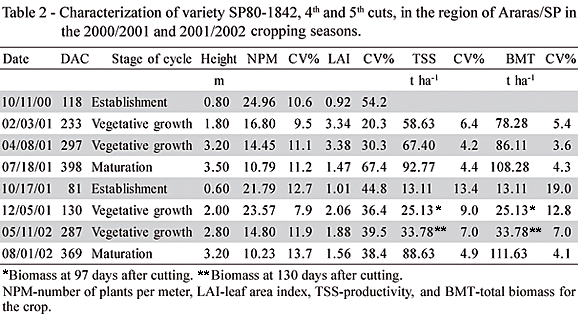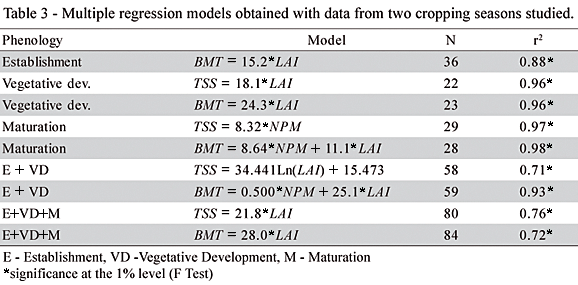A knowledge about the temporal development of agronomic variables in sugarcane is a very important aspect for the development of crop yield prediction models using remote sensing, and further studies are still needed. This paper describes the temporal evolution of sugarcane biophysical parameters, such as total biomass, leaf area index, number of plants per meter, and productivity. During two seasons, a commercial field in Araras/SP, planted with variety SP80-1842, on the 4th and 5th cuts, was monitored on eight different dates, and data were obtained for 2 m of sugarcane in three crop rows at 18 sampling points. Linear and multiple regression analyses were used to study growth analysis and to correlate agronomic variables (leaf area index and number of plants per meter) with biomass and productivity. Gompertz model, a sigmoidal curve, was the best adjustment curve for total biomass and yield in relation to days after cutting (r² = 0.8987 and r² = 0.9682, respectively); number of plants and leaf area index showed best fit with a cubic exponential model and a quadratic exponential model, respectively. Total biomass and cane productivity were well correlated with LAI in the first two stages of the sugarcane cycle using linear regression. At the end of the cycle, total biomass and cane productivity were more related to number of plants, and lower r² values than in other stages were obtained by the models.
biomass; leaf area index; crop temporal evolution






